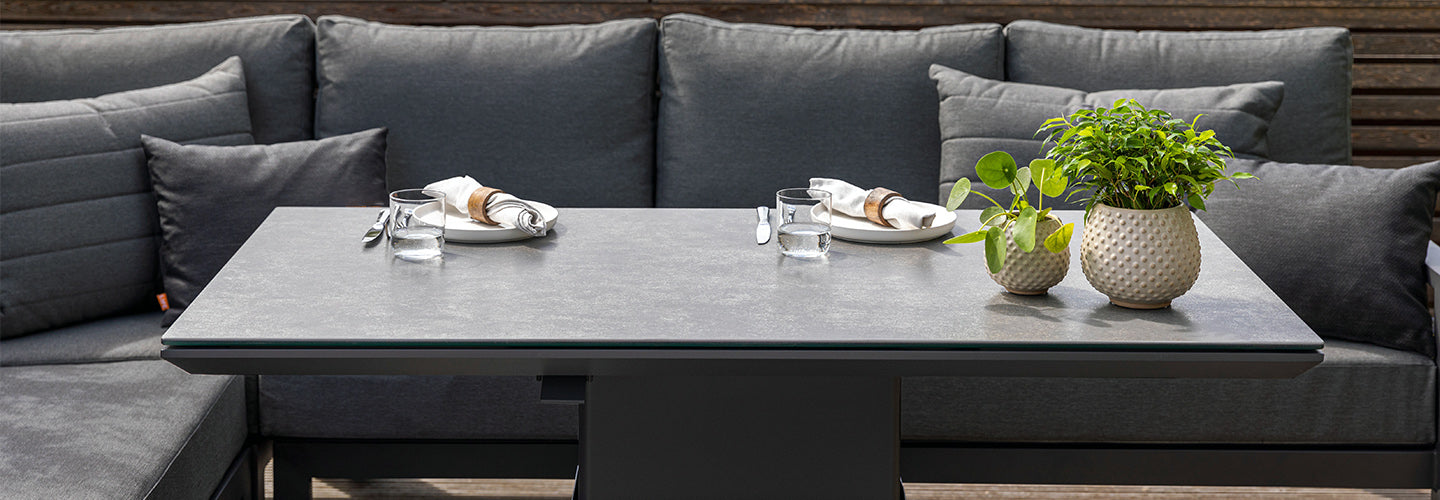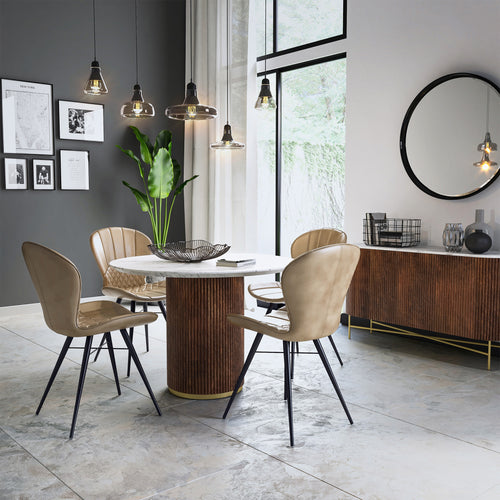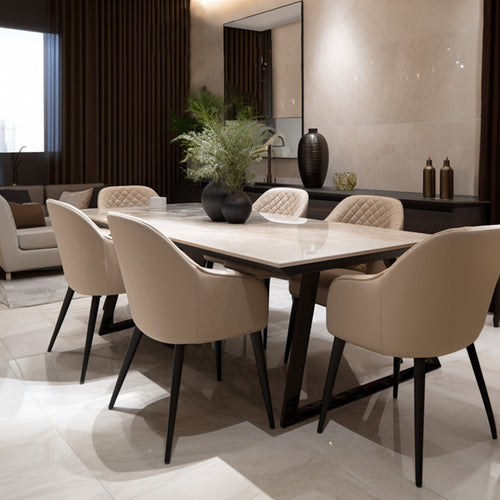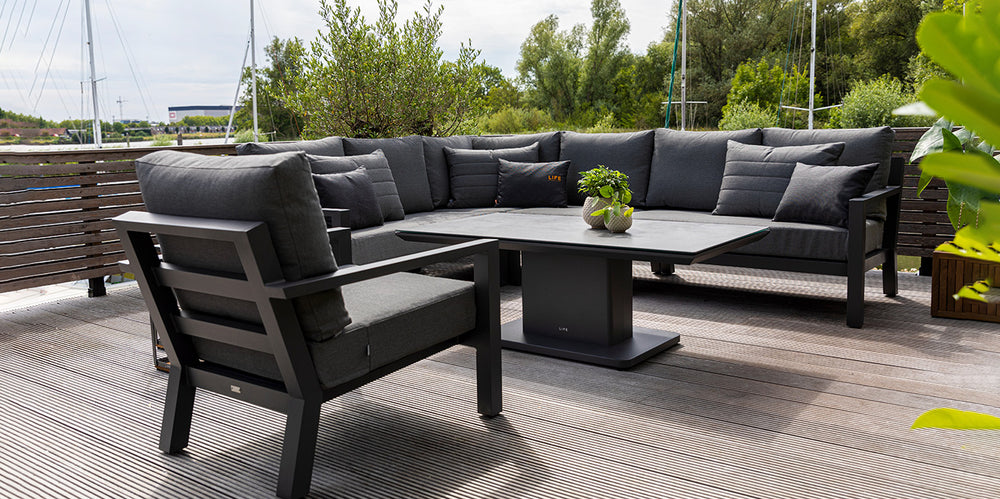Overview of Ceramic Tables
Ceramic tables have gained immense popularity in recent years due to their versatility and durability. The ceramic material is made by heating and cooling natural clay, resulting in a hard and heat-resistant surface. These tables come in a variety of colours, patterns, and designs, making them a fantastic choice for those seeking customization options.
Properties of Ceramic Tables
Ceramic tables possess several noteworthy properties. First off, they are excellent for daily usage since they are very resistant to heat, stains, and scratches. Ceramic material is also a non-porous substance, making it easy to clean and non-absorbent of liquids.
What are the Advantages of Ceramic Tables?
Choosing a ceramic table offers numerous benefits. The durability of ceramic ensures that your table will withstand the test of time, maintaining its appearance and functionality for years to come. The heat-resistant nature of ceramic makes it suitable for hot dishware without the risk of damage. Furthermore, the vast array of colours and patterns available allows you to find the perfect ceramic table that complements your interior style.
Overview of Marble Tables
Marble has long been associated with luxury and elegance. Marble tables exude a timeless appeal and are often considered a statement piece in interior design. This natural stone is formed from limestone, subjected to intense heat and pressure over thousands of years, resulting in its distinct veining patterns and unique colours.
Properties of Marble Tables?
Marble tables possess distinctive properties that set them apart. The veining that gives marble its inherent beauty creates individuality and charm. Marble is also a very strong material that can bear the stresses of regular use. It is crucial to remember that marble is porous and might become stained if it is not properly sealed and maintained.
What are the Advantages of Marble Tables?
Investing in a marble table offers numerous advantages. The timeless elegance of marble can elevate the aesthetics of any room, creating a sophisticated and luxurious atmosphere. Because marble is very resilient, you can be confident that this style of table will look beautiful for a very long time. Additionally, marble has superb heat resistance, making it perfect for hot dishware without damaging it.
Overview of Stone Tables
Stone tables encompass a wide range of materials, such as granite, quartz, and travertine, each with its unique characteristics and benefits. Stone tables offer a natural and organic appeal, making them a popular choice for those seeking a rustic or earthy interior style.
Properties of Stone Tables
Stone tables possess distinct properties that make them desirable for various applications. Granite, for example, is renowned for its exceptional durability and resistance to heat, scratches, and stains. Quartz, on the other hand, is an engineered stone that offers a wide range of colours and patterns while also being highly resistant to scratches and stains. Travertine showcases a textured surface with natural holes, lending a unique and rustic charm to any space.
What are the Advantages of Stone Tables?
Opting for a stone table provides several benefits. The durability and resistance to heat, scratches, and stains ensure that your table will maintain its beauty and functionality for years. The natural and organic appeal of stone tables adds a touch of warmth and character to your interior design. Furthermore, the wide variety of stone materials available allows you to find the perfect table that matches your personal style and preferences.
What is a Sintered Stone Table?
Sintered stone is a type of engineered material that is produced through a process called sintering. This process involves subjecting various natural minerals and elements to extreme heat and pressure, resulting in a dense, solid surface. Sintered stone tables are made from a mixture of natural minerals, such as quartz, feldspar, and porcelain, which are finely ground and compressed into slabs. These slabs are then subjected to high temperatures, creating a material that possesses the best qualities of both natural stone and engineered materials.
Benefits of Sintered Stone Tables
Choosing a sintered stone table brings several benefits to users and their interior styles. The exceptional durability of sintered stone ensures that the table is difficult to chip and is long-lasting, maintaining its beauty and functionality for years. Its resistance to scratches, stains, and heat provides peace of mind and ease of maintenance, making it suitable for busy households. It is also weatherproof so that it can be utilised in outdoor settings.
The versatility of sintered stone tables allows for seamless integration into various interior styles. Whether you prefer a modern, contemporary look or a classic, traditional ambiance, sintered stone tables can complement any design scheme. The wide range of available colours, patterns, and textures allows you to find the perfect table that harmonizes with your existing décor.



